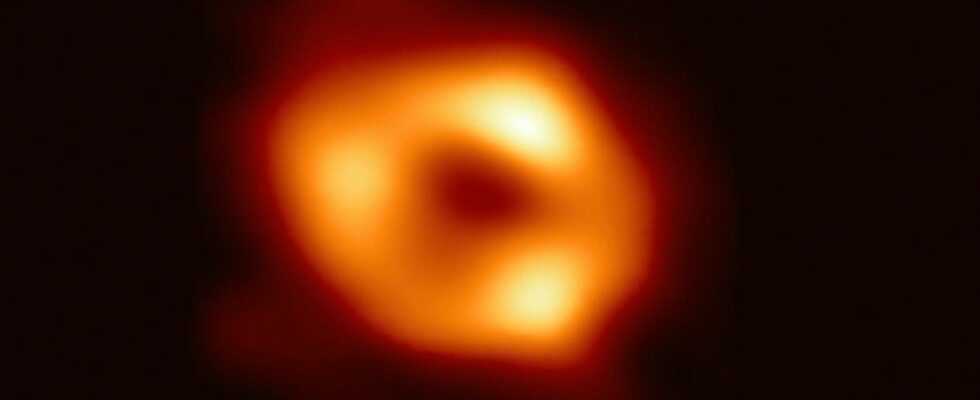On May 12, 2022, scientists from the Event Horizon Telescope revealed for the first time an image of the supermassive black hole located at the center of the Milky Way, our galaxy. A technical and scientific achievement, which improves our knowledge and verifies theoretical astrophysics!
And as a bonus: it’s pretty.
It’s gonna be a black hole
Since the exceptional first image of a supermassive black hole (in the center of the M87 galaxy), the discoveries of the Event Horizon Telescope (EHT) have been eagerly awaited. As a result, when the group announced last week a ” major conference about our Milky Way “, the excitement has gone up a notch. And rightly so! The image, unveiled almost at the opening of the conference, shows for the very first time Sagittarius A*, the supermassive black hole located at the center of our galaxy!
The masterpiece of observation, because it is one, amounts to observing an object the size of a crescent on the surface of the Moon, seen from the Earth… All thanks to its radio emissions, collected by a unique network in the world. The image produced is the most resolved ever obtained with the technique of very long baseline interferometry (Very Long baseline Interferometry).
The EHT is still sparking
This observation is incredible, in several respects. First, because it confirms by measurement, once again, that there is indeed a supermassive black hole in the center of the Milky Way. On the other hand, its size characteristics are as predicted by theory (and that’s a big sigh for physics!), with an estimated mass of around 4 million suns, 27,000 light-years away.
But it is not “one” photo, rather the result of thousands and thousands of measurements, totaling 600 terabytes of data captured over five sessions, and which took several years to exploit. The EHT (which some scientists do not hesitate to call the Giant Earth Telescope) is also based on supercomputers, and on 25 years of work to optimize the technique capable of associating all this data together. Dizzy.
My black hole is also your black hole
The evolutions are major since 2019 and the image of the black hole of the galaxy M87. Because Sagittarius A* is 1,000 times less massive! Which not only implies that it is smaller, but also that the gases that surround this black hole (and this is what we see here, the emission of light from the hot gases that surround Sgr A* ) orbit in just a few minutes. Impossible, therefore, to compile several hours of observation without taking this rotation into account. This is also why the teams insisted a lot today during the conference on the incredible contribution of simulation models and tools developed by young scientists to better analyze the data.
The Event Horizon Telescope is not going to stop there. This tiny dot in our sky, the invisible pivot of our galaxy, is now better documented than ever. But scientists have already announced that they can improve their measurement techniques, as well as the treatments they can provide to better understand them. So there are big improvements on the horizon, and new images to come, as well as possible animations. Yes, we are going to film the black hole in the center of the Galaxy. Welcome to XXIand century.
Source : EHT via YouTube

31